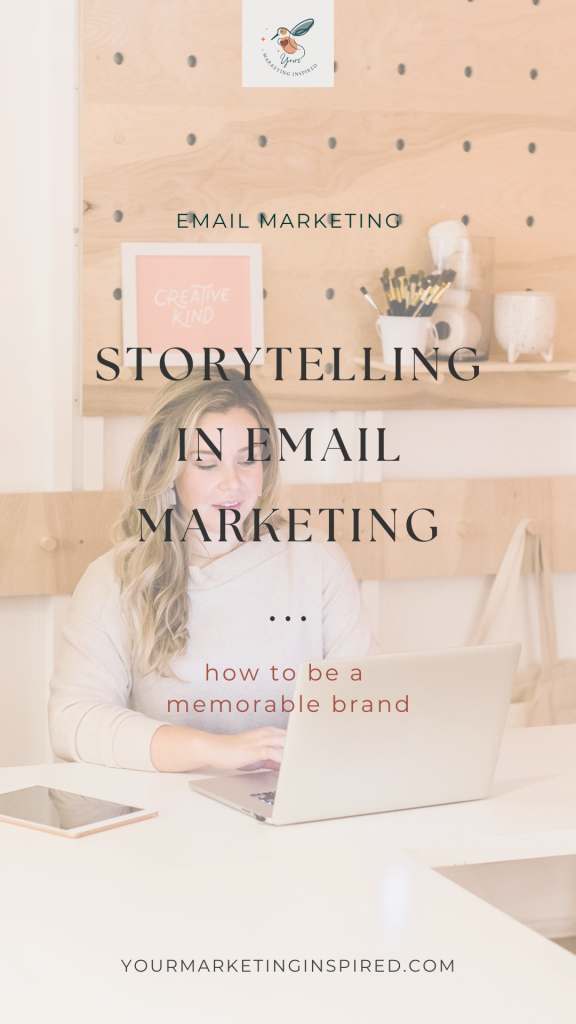
Storytelling in Email Marketing: How to Be a Memorable Brand
Statistics show that emails that tell a story can increase engagement by up to 70%. Why is that important? Because it means storytelling in email marketing is not just helpful for engagement, but also a great tool for transforming how your audience perceives your brand. By weaving stories into your marketing, you’ll be able to build deeper connections with your readers in an authentic way.
Headstream, a content marketing agency conducted a study about the power of brand storytelling [R]. While the research is several years old at this time, the results showed almost 80% of responders felt that storytelling made campaigns more effective and more then 55% said they would purchase from a brand if they resonated with their stories.
This way, you will enhance your brand's image and credibility.
Also, storytelling gives you the ability to target your audience better and directly reach leads.
All that to say, it's an effective and efficient way to address your readers' needs and preferences.
Storytelling in Marketing Examples
If using stories in your emails sounds overwhelming, I get it. It's one of those things that sounds simple. . . until you try to do it. So I put together the examples below to break it down for you so you can easily get started with storytelling:
Example #1. Warby Parker’s Customer Stories
This is customer-focused storytelling. Although this may seem like just sharing testimonials, it’s actually a way to show real-life applications of their products. Plus, it humanizes the brand. That means you have a predictable, consistent way to connect emotionally with your audience. Add to that the founders’ story and sharing their give-back campaign and Warby Parker becomes memorable in the minds of their customers.
Example #2. Etsy
Etsy has employed emotional storytelling, especially during their holiday campaigns. For example, their "Give More Than a Gift" campaign featured a series of emotionally resonant ads that focused on the meaning and personal connection behind the gifts purchased from Etsy. These ads highlighted stories about cross-generational relationships, cultural heritage, and personal traditions, effectively using narrative to deepen the emotional impact of the ads.
Example #3. Slack
For a more B2B example of storytelling marketing, Slack creates detailed case studies and stories about how different companies use their platform to solve unique communication challenges. These stories help to illustrate the versatility of Slack and build trust with potential customers by showing real-world applications and successes.
Blogs help you connect with your audience on a more personal level and allow them to interact with you in an individual capacity. Blogging also helps to present viewers with fresh content regularly.

Tips for Storytelling in Email Marketing Success
Here are a few tips to help you maximize your results with storytelling in email marketing:
Know Your Audience
To achieve the best results, you have to continually tailor your stories to the interests and emotions of your audience. When you create a cohesive content experience that resonates personally with your audience, you effectively enhance your content marketing efforts. Knowing your audience let's you choose and tell stories will instantly resonate with them. You'll be able to highlight experiences you both connect with.
Next, Be Authentic
When you write personalized content, you provide a seamless experience for your customers. In other words, you guide your prospects through the funnel with authenticity and integrity. To get started, think about where your customers are in their journey, identify their pain points, and monitor how they respond to different stories you tell.
Finally, Use a Strong Hook
Nowadays, people are bombarded with content, so they are selective about what they engage with. If you want to boost engagement, you can’t overlook the importance of a strong opening. If the idea of creating engaging hooks makes you feel nervous, consider this: a compelling hook can increase your email open rates by up to 40%. That means if you don’t craft engaging openings, you’re potentially losing out on a significant amount of engagement.
One thing you can do is start with a question or a surprising fact that draws readers in. I've also found it effective to start at an actionable part of the story. It can be more engaging than the exposition or set-up.
Start using Storytelling in your Emails Today
If you take anything away from this article, remember that storytelling is key to building authentic and impactful relationships with your audience.
The best way to improve your email marketing is to start with knowing your audience, that way you can set yourself up for deeper engagement. So, what do you say? Are you ready to give it a go?
Now that you know the ins and outs of storytelling in email marketing, you can grab the Email Ease Blueprint which offers a method for creating 52 newsletter based prompts that you can personalize with your own stories and share with your readers. Once you do, you’ll see how easy it is to engage your readers (and boost your revenue as a result!)
